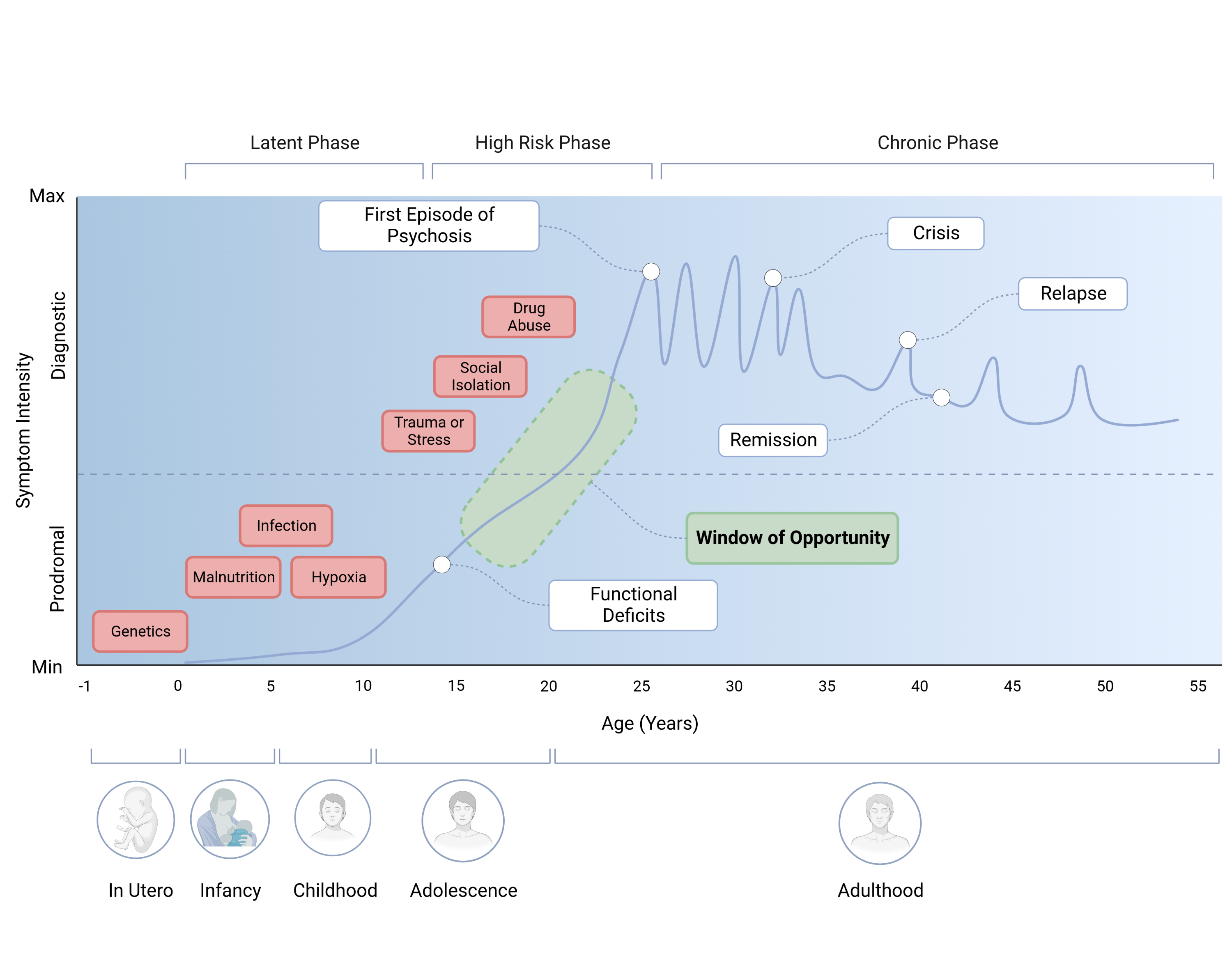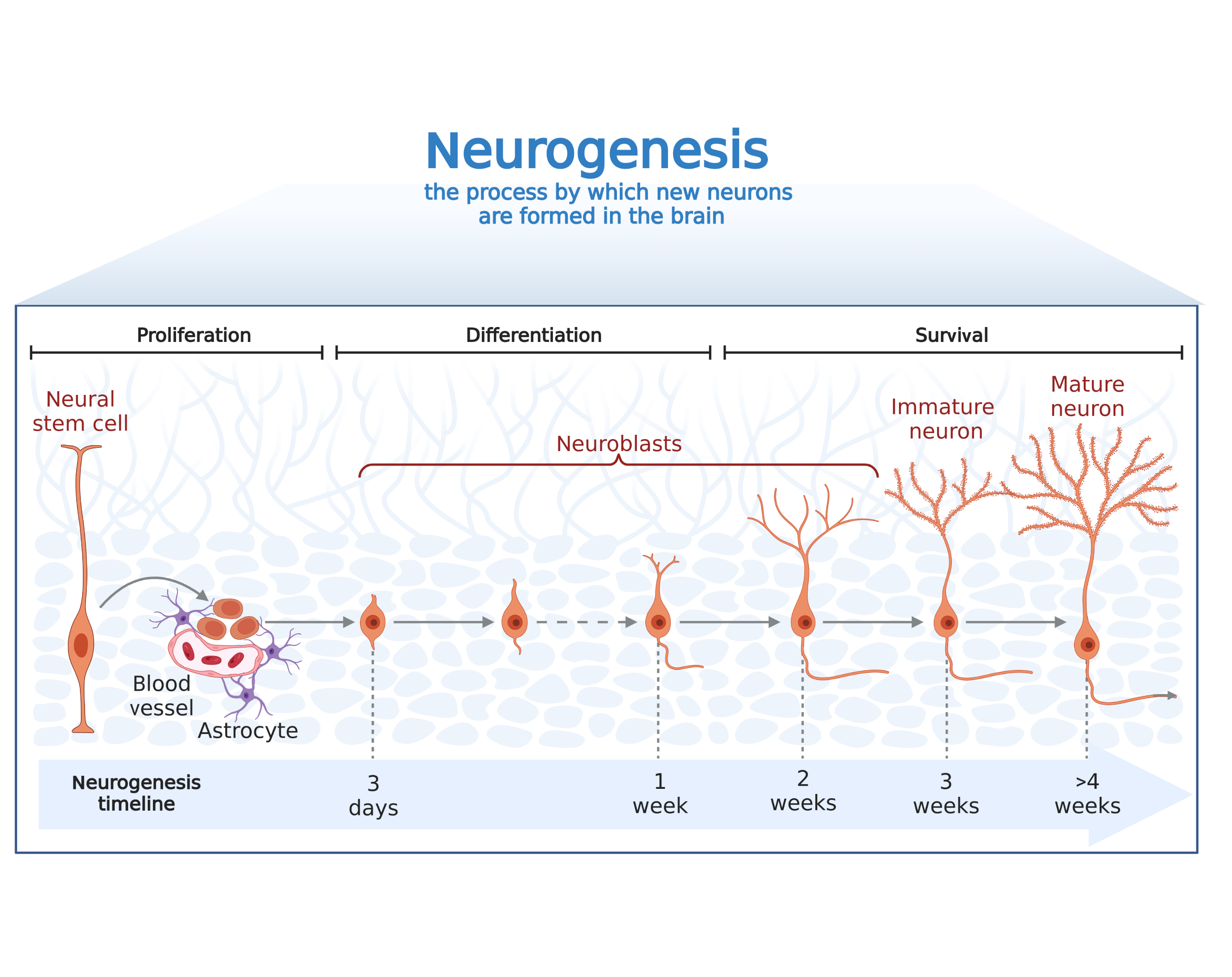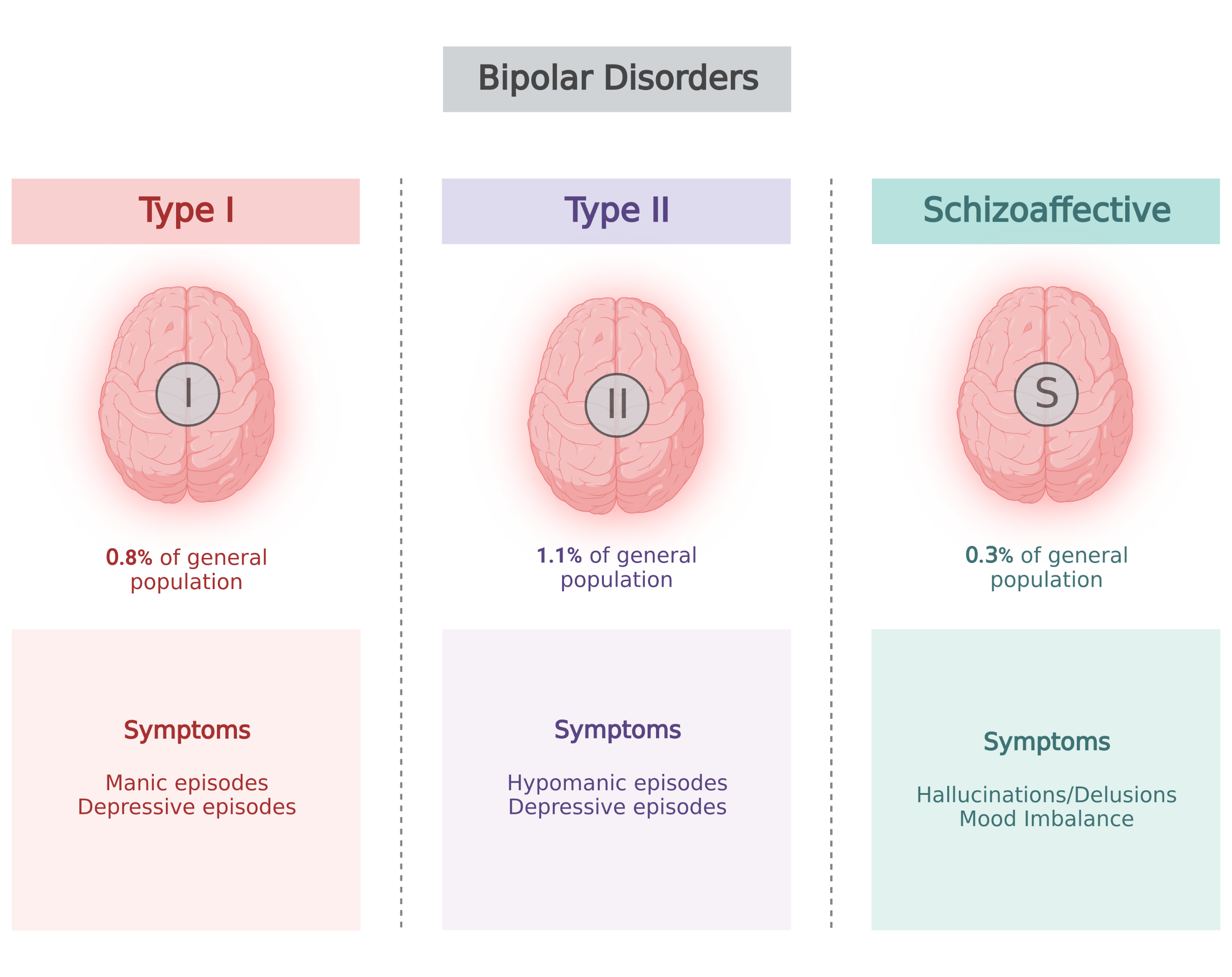Developmental Aspects of Mental Disorders
Welcome to my blog! This summer, I am embarking on an exciting outreach adventure by sharing my PhD research with you. Each week, I will release a new blog post where I unpack a specific aspect of my scientific work. The best part? I will be presenting the information in bite-sized, easily understandable chunks of text! So, whether you are a fellow academic, a curious mind, or simply looking to expand your knowledge, this blog is here to serve you. Throughout the text and in each image you can find links to more detailed sources of information for the topics I discuss here. This week, our focus lies on the developmental aspects of severe mental disorders. Let's get started!

In contrast to most other neurological diseases, schizophrenia and bipolar disorder typically arise in early adolescence, and are presumed to be triggered by aberrations in brain development and maturation. These aberrations are thought to be due to an interplay of genetic, epigenetic, environmental, and developmental factors. A typical case of schizophrenia starts with a latent phase in childhood when sub-threshold psychotic symptoms and developmental delays might become apparent. The initial phase of schizophrenia is followed by a first episode of psychosis, typically in adolescence or young adulthood. About 10% to 15% of patients recover after this first episode, a similar proportion of patients suffer from an unremitting and treatment-resistant form of schizophrenia, and the remainder develops a chronic and fluctuating relapse/remission disease pattern.

Each of the distinct phases in the progression of schizophrenia can be matched to a period in brain development, underscoring the importance of neurodevelopment in psychiatric disorders. For instance, the initial, latent stage of schizophrenia mostly occurs during the years of early brain formation. Whereas the first episode of psychosis typically happens right after or in the midst of a period of intense brain reorganisation and sexual maturation marked by adolescence, the chronic aspects of schizophrenia happen throughout life’s later decades of brain maintenance. The exact nature of the relationship between cognitive deficits and schizophrenia is a source of debate, and it remains unclear how minor developmental deficits in early life can transform to a severe psychotic illness later in life.

Neurodevelopmental disturbances are less consistently implicated in bipolar disorder, most likely due to the comparatively strong patient heterogeneity in bipolar disorder compared to schizophrenia. A substantial subset of patients with bipolar disorder exhibits a sub-threshold manifestations of mood imbalance before full disease onset, similar to the progression seen in schizophrenia patients, but it remains unclear if this observation extends to the entire patient population. Given that the underlying developmental aspects of schizophrenia and bipolar disorder typically start many years before diagnosis, identification of at-risk individuals could potentially be used to avoid – or at least curb – large personal and societal costs.
The content of this blog post reflects my personal opinions and insights and should not be attributed to my employer or investors. The information provided in this post is for educational purposes only and should not be construed as medical advice. It is crucial to consult with medical professionals for any mental or physical healthcare concerns. All images featured in this blog post were created using Biorender.com under an academic license. These blog posts are derived from excerpts of my PhD thesis, based on research conducted at the University of Oslo, which you can also read on this website.
